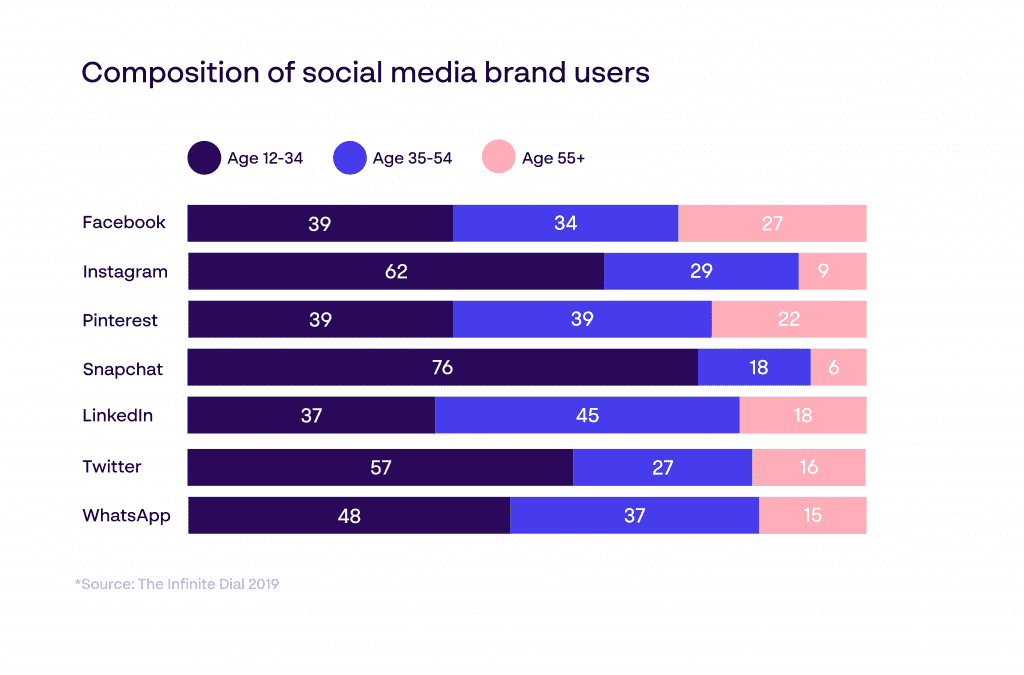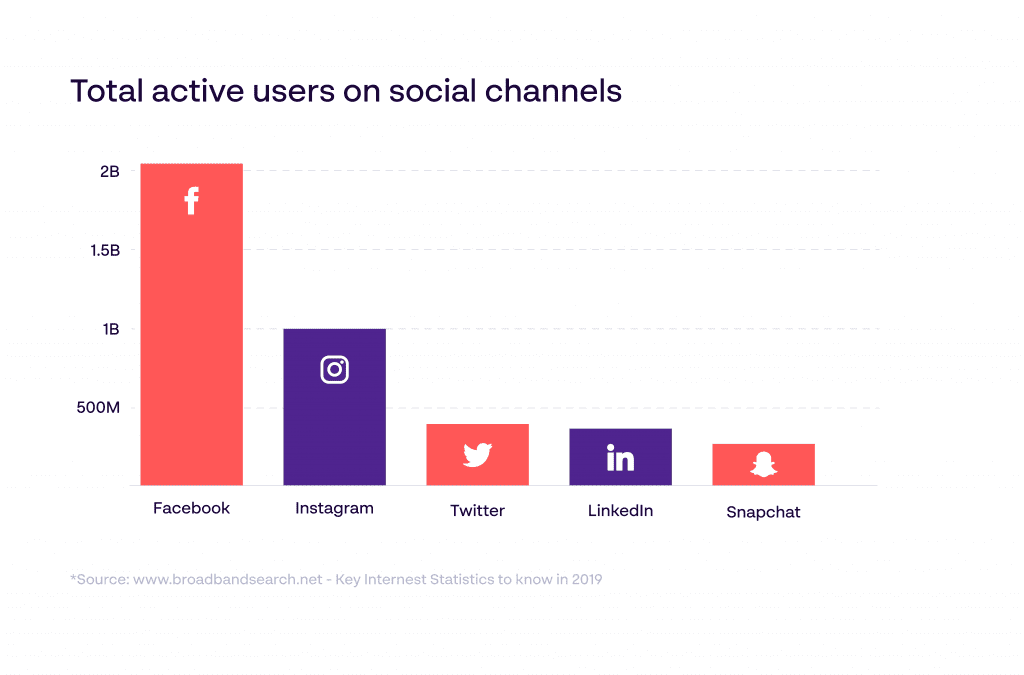When social media networks began, they were a means for people to keep up with friends and meet others with shared interests. But it was never going to be long before brands got involved in the hopes of securing these same powerful connections with their target audience.
As much as it can infuriate us sometimes, we can’t escape the influence of social media. Internet users spend over 30% of their time online browsing through Facebook, Twitter, LinkedIn, Instagram, and the numerous other social media platforms available to them. Time that brands can harness to create a connection.
But what exactly is the role of social media in business communications, both internally and externally? And how can organisations bring both together to reap the greatest benefits from this partnership?
How has social media changed business communications?
In many people’s eyes, the use of social media for corporate communications has dragged the processes out of the dark ages and into the future.
Between January 2015 to April 2018, 64% of FTSE 100 companies used Twitter to communicate their earnings news and other prominent business news to their audiences, something that even just a couple of decades ago would probably be reserved to shareholders and an internal memo.
This is just one example of how social media has changed the game for business communications. Organisations of any size, industry or reach now are compelled to employ these social-sharing platforms to inform and educate their audience, in a way that they never needed to before.
Like it or not, social media is everywhere, making it a vital component of how companies not only reach their consumers, but their employees as well.
And that really illustrates the significance of social media in corporate communications. It is not primarily about promoting a company’s products or services in a sales-oriented manner; it is about aligning your brand with your audience.

95% of adults aged 18-34 are most likely to follow a brand through social networking. While many judge success on social media by the number of likes they’ve received on Facebook or the impressions on their Twitter page, in many ways its true value comes in illustrating how your followers engage with the content you’re sharing on these platforms. That allows you to tell if your values are hitting home with your target audience.

These platforms are now essential in how your customers and your employees keep up with the news and developments surrounding your organisation – the bond between social media and corporate communications is unbreakable.
Is the pairing of social media and corporate communications a good thing?
This close connection between social media and corporate communications presents numerous benefits for businesses looking for an efficient, cost-effective way to engage their customers, employees and more with their brand identity.
Allow your audience to visualise your brand
Central to the importance of social media in business communications is how these platforms allow customers and employees to visualise a brand like never before. Most people absorb visual information in a more effective way than written directives. This allows a means for brands to translate information that would previously be communicated in quite a stale, formulaic fashion in a more creative, engaging manner.
By utilising imagery, videos, quizzes, emojis and other staples of social media communication, your organisation can help others identify and understand the qualities and values of your brand much faster and more effectively. As an element of your corporate communications, this is arguably the most valuable role social media can play.
Link employees and customers
While your external communications are more widely associated with your consumers and the wider public, it can improve the way you engage with your team members around the world as well. By using social media for your corporate communications with compelling content, you make them fans of your brand in the same way you intend to do with your consumers.
That improves the sense of belonging your employees feel towards your brand, making them more motivated and connected to achieving your objectives.
Employee advocacy
Following on from the previous point, if your employees are fans of the social media posts you’re putting out, they are more likely to become valuable brand advocates. Let’s face it – most people don’t want to be sold to, especially when they’re browsing social media. But, they are more likely to build trust and form a connection with a brand if other people show enthusiasm for it – even if those people work for that organisation.
Social media is an avenue for employees to celebrate, promote and emphasise their brand, which in turn boosts employee engagement, makes your brand more appealing to prospective recruits, and enhances how consumers view your organisation.
Improve collaboration
Finally, the ‘social’ aspect of social media in business communications makes these platforms useful tools for collaboration. Innovations like Workplace by Facebook and other social chatting tools like Slack mean that employees across all locations can share events, news and stories relating to your company.
A more connected workplace is a more motivated, more productive and more informed workplace. By harnessing your social media platforms effectively, you can spread your business communications more effectively to those within your teams.
Drawbacks of using social media for corporate communications
However, as always seems to be the case, social media acts as a double-edged sword. While it has immeasurably improved how efficiently and effectively brands can engage with their internal and external audiences and build better relationships with both, it also can cause significant damage to its reputation if not handled correctly.
Social media offers everyone a voice and an opinion, and that opinion might not always be favourable for your brand. One wrong step on social media or an ill-advised campaign can spiral out of control in a hurry, like when Doritos’ poorly-visioned development of ‘lady-friendly’ versions of their crisps. Within hours their Twitter timelines were ablaze with criticisms.
Then there are examples like the Kendall Jenner Pepsi campaign, which was a not very well-considered attempt for the brand to be socially responsible. The combination of social media and corporate communications can be an effective way of illustrating your CSR work as a company and your commitment to causes your audience cares about. But it must be authentic and executed well, otherwise it can have a severely negative impact.
Staying on top of this constant, unrelenting stream of digital media is a challenge for even the largest global organisations, and can lead to an argument suggesting that social media hasn’t been the most positive innovation for business communications teams to contend with.
Nevertheless, the ties between social media and corporate communications are too robust now to cause a break, at least for the foreseeable future. So, it is important that your organisation accounts for this as part of your overarching corporate communication strategy in order to maximise the benefits these platforms offer your company while minimising the drawbacks.
Maximising the role of social media in your corporate communications
Here are a number of techniques and approaches to consider to amplify the value of your corporate social media:
Invest in social listening tools
By dedicating time and resources to monitoring and tracking what audiences are saying about your brand, you gain a deeper understanding of what communications they are interested in receiving in social media, as well an overriding sense of how aligned they feel with your organisation.
Join up your teams
Integrate your corporate communications team with those responsible for sharing your social media content. The prevalence of these platforms and their immediate responsiveness makes it crucial that your communications strategy is clearly understood by those producing and spreading materials across these channels.
Choose channels wisely
While Facebook is still the most dominant platform by a considerable margin, that might not correlate with your audience or the messages you intend to send out. Make sure you spend time deciding on channels that will most effectively fulfil your social media and corporate communications objectives, and experiment with these over time.
Entertain, educate, engage
As alluded to earlier, your use of social media for corporate communications should prioritise content that brings people closer to your brand, not as a direct sales tool. Focus on delivering value and information, enhancing your brand reputation and increasing its share-ability throughout your audiences.
Incentivise employee advocacy
Whether it’s by developing effective internal communications that engage your employees or actually introducing an incentive package for staff to spread your content through their personal profiles, encourage and motivate your team to broadcast the benefits and positives of your workplace to a wider, receptive audience.
